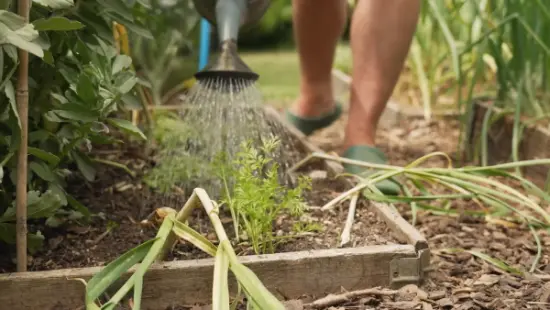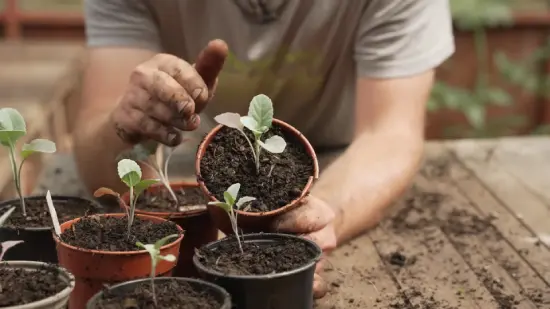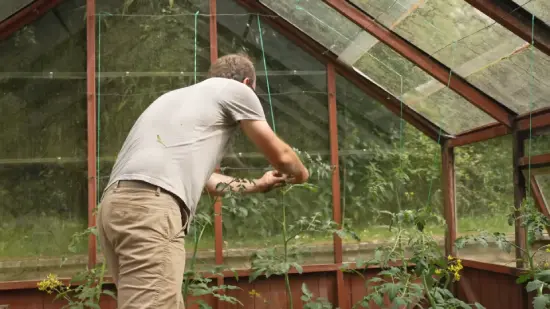Creating a beautiful, blooming garden generally requires a significant amount of time and effort, which can be challenging to manage amidst your busy schedule.
But you don’t have to sacrifice your desire for a gorgeous garden because of time and gardening expertise. Despite your busy schedule, there are practical and effective solutions to maintain a lush garden without sacrificing its beauty.
One effective way to reduce the labor-intensive aspects of gardening is to swap traditional flower beds for shrubs and hedges. Another smart strategy is to opt for low-maintenance flowers with hardy perennials and evergreen shrubs.
We will explore some hassle-free tips to transform your garden into a stunning yet easy-to-care-for outdoor oasis.
Creating a Low Maintenance Garden: Tips to Follow

If you wish to create a low-maintenance garden, you can do the following:
- Swap Flower Beds for Shrubs
- Plant Low Maintenance Flowers
- Install Artificial Lawn
- Go Large With Pots
Let’s discuss these in more detail.
1. Swap Flower Beds for Shrubs
As much as flower beds may look bright and colorful, they can be a lot of effort and difficult to maintain. They’re a lot of work and will take up your time.
Instead, you could replace these high maintenance flower beds for shrubs and hedges. They’re extremely easy to plant so it won’t take up time.
They add a different sense of height and texture to your garden, which also means that it adds a bit of shelter. Most importantly, they require hardly any attention other than the occasional trimming there’s not much you have to do.
2. Plant Low Maintenance Flowers
If you’re low on time and just aren’tthe most confident gardener, low maintenance flowers are the best way to go. If you’re going to go garden shopping for new plants, look for hardy perennials and evergreen shrubs.
You won’t have to replant these every year. And they still offer your garden beautiful, vibrant colors. Echinacea, Dianthus and Sempervivum and some of the best and most beautiful low maintenance flowers.
3. Install Artificial Lawn
If you’re really struggling with keeping your lawn clean and proper, installing artificial grass may be the best option for you.
Finding time to mow the lawn can be very difficult. Not only do you need to find a spare hour in the day, but it has to be a dry day, which can come rarely. It can’t have rained the previous days either.
Fake grass is such a good option for keeping your lawn looking neat with minimal effort. It also lasts you up to 20 years without needing a re-installation.
And you can still have plant pots around, or little garden beds where you can actually grow flowers, but now you won’t have to deal with the stress of mowing the garden.
4. Go Large With Pots
As a general rule in the gardening world, big pots are always easier to look after than small ones.
The smaller the pot, the quicker it dries out after watering which means it’s just going to have to be watered more often, taking up even more time.
Group plants in raised pots or use raised planters if you have little to no garden soil, which is the case for most urban gardens.
What Should You Consider When Creating a Low-Maintenance Garden?

When you plan to create a low-maintenance garden, consider some factors that will be helpful to you. The following are among them:
1. Plant Selection
When creating a low-maintenance garden, choosing the right plants is key. You want to opt for plants that require minimal care and can thrive in your local climate and soil conditions.
Avoid selecting tender species that demand special attention and protection during winter or those that require regular feeding and repotting. Look for hardy and resilient plants that can stand up to natural elements without needing constant intervention.
2. Sunlight and Shade
The amount of sunlight and shade in your garden can make a big difference in the success of your plants. Make sure to consider your garden’s specific conditions when selecting plants.
Placing sun-loving plants in the shade or shade-loving plants in direct sunlight will lead to poor growth and increased maintenance requirements.
Prioritize plants that are well-suited to the available light conditions to minimize the need for constant adjustments.
3. Natural Support
Climbing plants are beautiful additions to any garden, but they may require artificial support that can pile up maintenance tasks.
To avoid this, select plants that can grow independently without additional structures. Taking this approach will save time and effort in maintaining and managing the garden while keeping it looking natural and aesthetic.
4. Minimalistic Garden Structures
Keeping your garden structures, such as fences and furniture, in their natural colors without paint or stain can significantly reduce the time and effort required to maintain your garden.
Painting or staining these structures requires regular touch-ups, which can be time-intensive and expensive.
5. Smart Watering
Regarding watering your garden, several strategies can help reduce the need for constant attention. One approach is to select larger containers that can hold more compost, reducing watering frequency. Another strategy is to install a drip irrigation system or use mulch to conserve water.
6. Grouping Plants Thoughtfully
Organizing your plants with similar water and care requirements together in the garden can reduce the need for individualized care for every single plant.
By grouping your plants thoughtfully, you can provide them with the necessary attention while decreasing the overall time and effort required to maintain your garden. This approach can also ensure that each plant thrives, creating a healthy and low-maintenance garden.
What month should you start a low-maintenance garden?

For a low-maintenance garden, the best months to start planting would be during the major planting periods of spring and fall.
In the spring, which typically spans from March to May, you can begin sowing seeds or transplanting hardy, resilient plants that will thrive in the warmer months. These spring plantings can then be harvested in June and July, providing a fresh yield for the season.
Similarly, during the fall, which usually ranges from mid-July to September, you can start another round of planting, choosing varieties that are well-suited to cooler weather and will be ready for harvesting from October to December.
Which mulch attracts less bugs?
Cypress and cedar mulch are the best options for repelling bugs in the garden. These mulches contain natural chemicals and oils that act as insect deterrents, releasing a scent that bugs find unappealing.
By using cypress or cedar mulch, you can effectively reduce the attraction of pests to your garden beds, creating a more bug-resistant environment for plants.
This eco-friendly approach to pest control benefits the health of plants and minimizes the need for additional chemical treatments.
Embrace the Ease of a Low-Maintenance Garden
So, if you’ve been yearning for a beautiful garden that doesn’t demand too much time and effort, these easy strategies are the key to your outdoor oasis.
Swap labor-intensive flower beds for low-maintenance shrubs, adding texture and shelter. Opt for hardy perennials and evergreen shrubs to enjoy vibrant colors without the need for constant replanting.
Consider artificial grass to eliminate the hassle of mowing, and it will last for years. Lastly, go for larger pots that require less frequent watering.
With these simple steps, you can have a stunning, low-maintenance garden that fits perfectly into your busy lifestyle.
